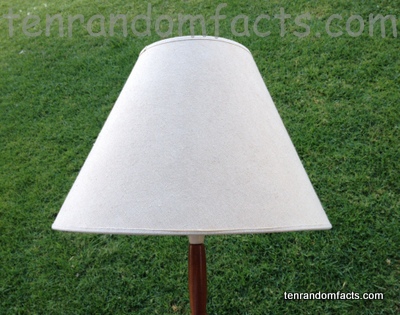These facts are shaded with a lampshade.
- Lampshades are covers that spread the light produced by a lamp’s light bulb.
- Lampshades were first used on public lanterns, in Europe’s Italy and Paris, in the late 1700s, to focus light downwards.
- Lampshades became more prominently used in the late 1800s, to cover the bright light of Thomas Edison’s and Joseph Swan’s newly invented electric light bulb in 1879.
- Lampshades are generally in the shape of a cylinder or cone, and come in a range of designs.
- Lampshades have, in more modern times, been used more prominently for decorative purposes instead of shading purposes.
- Lampshades are typically made of glass, textiles, plastic, or paper, and they often have a metal framework that supports the material, and attaches the shade to the lamp.
- The term ‘lampshade’ sometimes refers to a cover on a light attached to the ceiling.
- Beads, fringes, embroidery and coloured materials are some items used for decorating lampshades.
- Lampshades are often sold separately to the lamp, so if the shade is damaged or dirtied, a replacement can easily be purchased.
- A lampshade can also be called a ‘lamp shade’ or a ‘light shade’.
Bibliography:
Lampshade, 2014, Wikipedia, http://en.wikipedia.org/wiki/Lampshade
What are Lamp Shades?, 2014, WiseGEEK, http://www.wisegeek.com/what-are-lamp-shades.htm
Williams P, History of Lampshades, 2013, Shades of Light & Design, http://shadesoflightanddesign.blogspot.com.au/2013/04/history-of-lampshades.html






